Forms of Energy Teaching Resources
Explore forms of energy in your science classes with experiments, activities and more resources for primary teachers!
From lesson plans on electricity to worksheets about thermal energy, this collection is packed with Australian science curriculum-aligned printables and digital resources created by teachers for teachers like you. You'll save time on your lesson plans with easily editable resources, plus you'll be able to meet your students' needs with differentiated options.
Best of all? Every single resource has been carefully reviewed by the science teachers on the Teach Starter team to ensure it's ready for your classroom and your students!
Is this your first year covering the different forms of energy in your classroom? Or maybe you are just looking for fresh ideas? Read on for a primer from our teacher team, including a look at the two main types that these forms can fall into.
What Are the 2 Types of Energy?
Energy can take a variety of forms — from the mechanical energy involved in stretching a rubberband to the motion energy in a gust of wind — but every form of energy can be classified into just two main types. Before we dive into the long list of forms of energy that exist in the universe, it might help to take a look at these types:
- Potential Energy
- Kinetic Energy
Read on to learn how we explain these types to our students!
What Is Potential Energy? A Kid-Friendly Definition and Example
Potential energy is the energy that an object has because of its position or condition.
Let's say you take out a rubberband and stretch it way, way, way out with your hands. Because it is stretched out, the rubberband is full of potential energy that will help it fly farther when it is finally released!
What Is Kinetic Energy?
Kinetic energy is the energy of an object in motion. This type of energy depends on the object's mass and speed.
Let's look at that rubberband example again! It may have potential energy when it is held in a stretched-out position, but once it is released, the rubberband now has kinetic energy as it flies through the air!
What Are Forms of Energy? Examples for Kids
Now that we've covered the two types of energy, let's look at the different forms of energy that fall under each type. We've developed these explanations to help you as you work with students to gain a deeper understanding of how energy affects people and the environment around us!
4 Forms of Potential Energy
- Elastic Energy —This is the energy that can be found when an object is stretched or compressed. Elastic energy can be found in a coiled spring or a stretched rubber band.
- Nuclear Energy — Nuclear energy is a form of energy that originates from the nucleus, or the core, of an atom. This kind of energy is commonly used to generate electricity, but it requires the process of releasing it from the atom.
- Gravitational Energy — Gravitational energy is the energy an object has due to its position in a gravitational field. For example, if you hold a book high in the air, its height creates the potential for the book to fall. This is its gravitational energy and its potential energy!
- Chemical Energy — This type of energy is stored in atoms and molecules.
5 Forms of Kinetic Energy
- Mechanical Energy — Mechanical energy is the energy possessed by an object due to its motion or position.
- Electrical Energy — This is the energy produced by the flow of electric charges or electrons. The electricity that we use to power our computers and our lights is a form of electrical energy!
- Light Energy — Light energy is the energy that we see as visible light. We can get this energy from natural sources like the sun or human-made sources like the lightbulb.
- Thermal Energy — Also called heat energy, thermal energy is a form that most students have experienced in their lives. It's energy that comes from the heat of an object or system, such as the energy of the sun.
- Sound Energy — This form is the energy produced by vibrations that create sound waves. It's the type of energy involved when we speak or sing, and it's also the energy involved in all the noises produced around us.
- Plus Plan
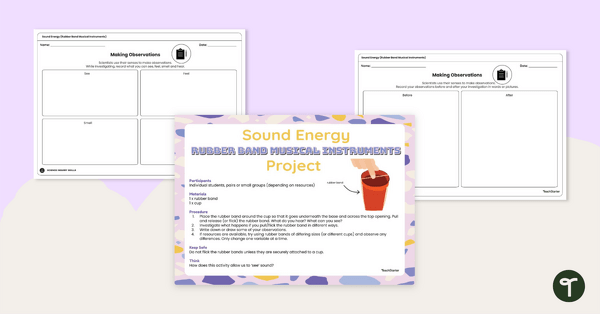
Sound Energy Project (Rubber Band Musical Instruments)
Use this sound energy experiment to help your students visualise sound using everyday items.
- Plus Plan
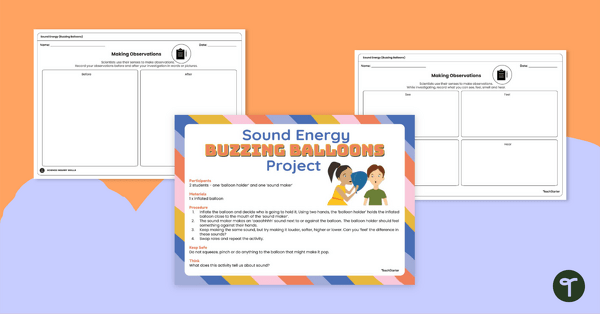
Sound Energy Project (Buzzing Balloons)
Engage your class with this sound energy exploration! This simple experiment will show students how sound is produced by a source and can be sensed.
- Plus Plan
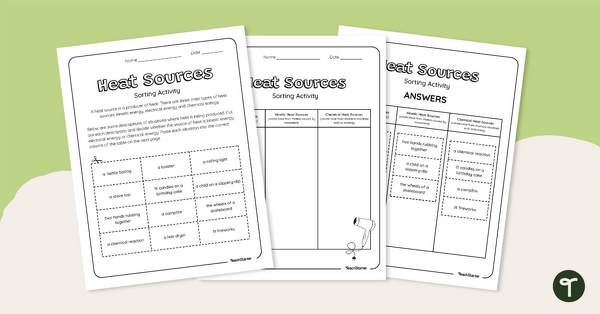
Heat Sources Cut-and-Paste Worksheet
Explore different types of heat sources with your students using this cut-and-paste worksheet.
- Plus Plan
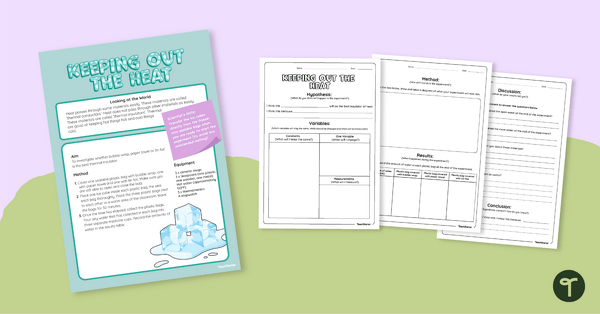
Heat Insulators Experiment (Keeping Out the Heat)
Investigate heat insulators with your students using this engaging science experiment.
- Plus Plan
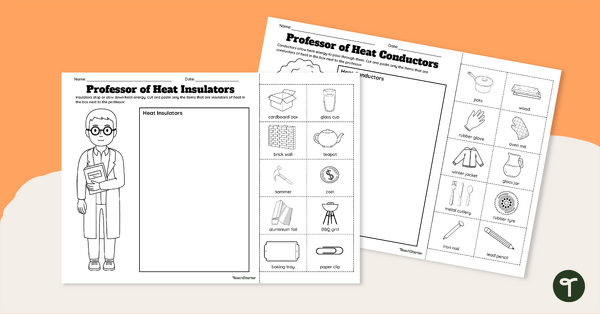
Heat Conductors and Insulators Sorting Worksheet
Explore materials and everyday items as heat conductors or heat insulators during your heat energy unit plan with this cut-and paste worksheet.
- Plus Plan
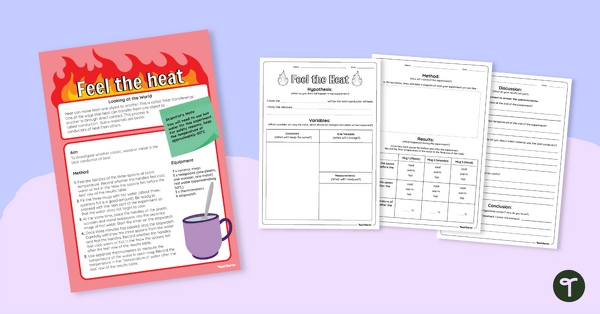
Heat Conductors Science Experiment (Feel the Heat)
Investigate heat conductors with your students using this engaging science experiment.
- Plus Plan
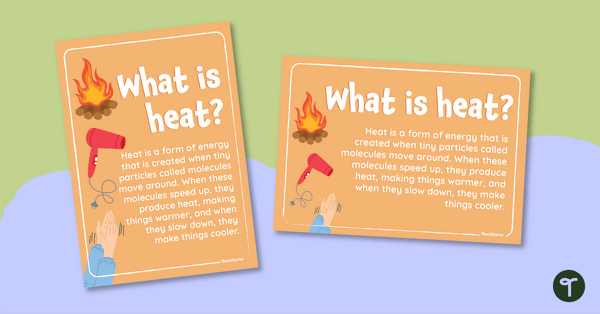
What is Heat? Poster
Explore the concept of heat energy with this classroom poster.
- Plus Plan
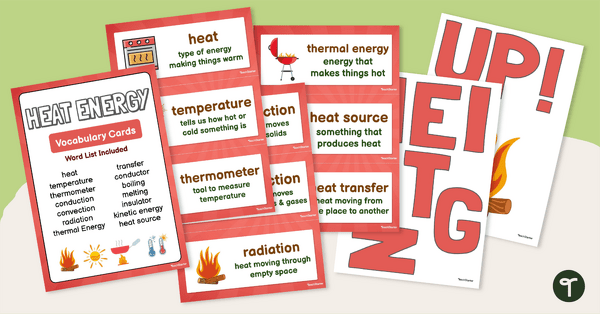
Year 3 Heat Energy Vocabulary Cards
Explore heat energy vocabulary with this set of thermal energy vocabulary cards.
- Plus Plan
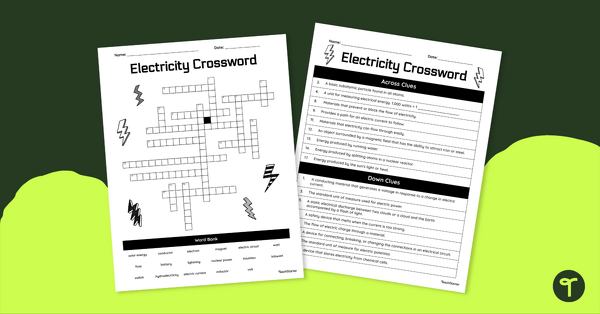
Electricity Crossword
Review vocabulary for electricity concepts with a science crossword puzzle.
- Plus Plan
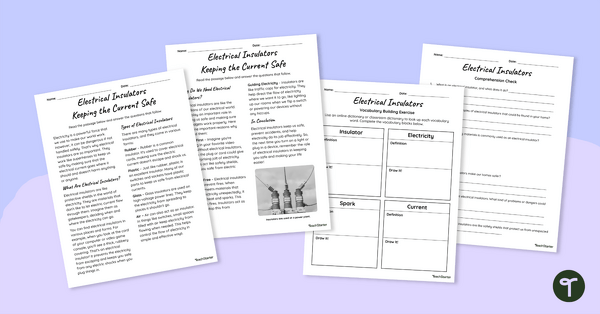
Electrical Insulators Reading Comprehension Worksheet
Discover the shockingly interesting world of electrical insulators with our downloadable reading comprehension worksheet.
- Plus Plan

How Electricity Gets to Our Homes Poster
Display this year 6 science poster in your classroom that shows how electricity reaches and powers homes.
- Plus Plan
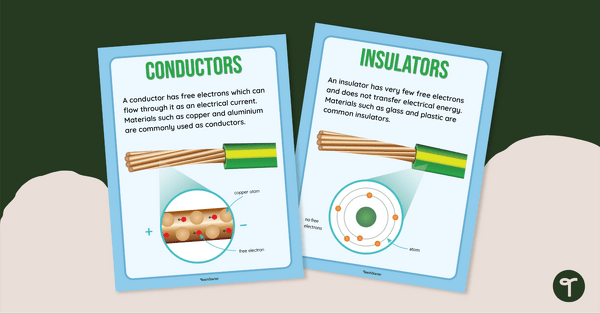
Insulators and Conductors Poster Set
Teach your students about the characteristics of insulators and conductors with this set of science posters for the classroom.
- Plus Plan
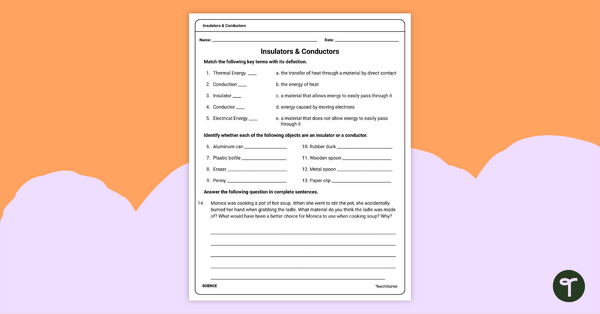
Conductors and Insulators Worksheet
Use this insulators and conductors worksheet with your students to practise identifying the characteristics of thermal and electrical energy.
- Plus Plan
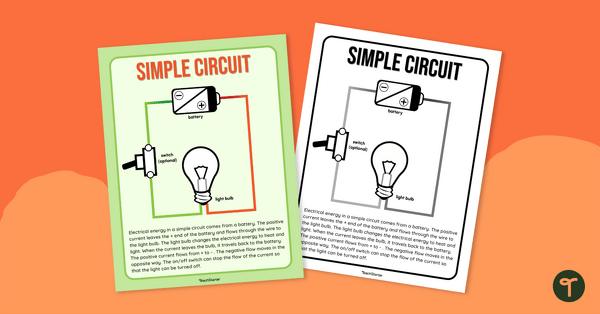
Simple Circuit Diagram
Spark curiosity and illuminate young minds with the wonders of electricity. Download this simple circuit diagram to light up your classroom!
- Plus Plan

Energy and Electricity Vocabulary Cards
Reinforce science vocabulary in your classroom with this set of word wall cards that focus on forms of energy and electricity.
- Plus Plan
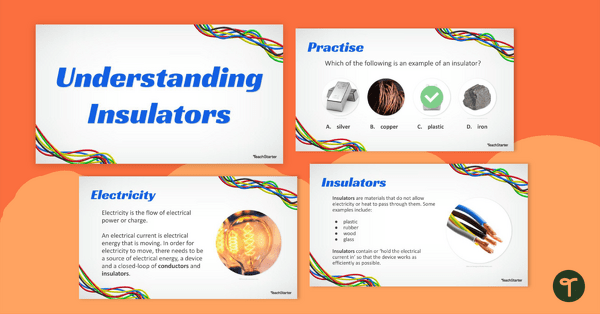
Understanding Insulators Teaching Slides for Year 6
Teach your students about electrical and thermal insulators with this teaching presentation.
- Plus Plan
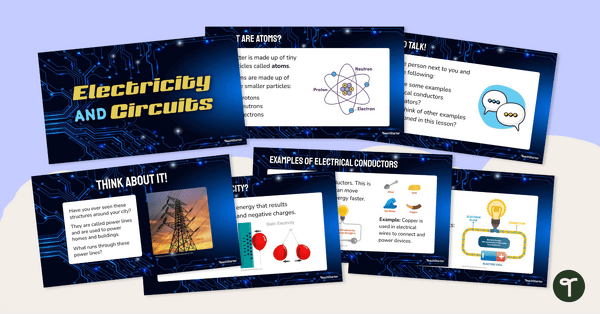
Electricity and Circuits Teaching Slides for Year 6
Use our editable teaching slides to break down the fundamentals of electricity and circuits for your students.
- Plus Plan
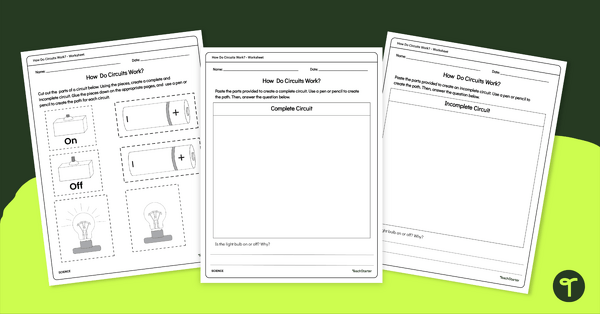
How Do Circuits Work? Worksheet for Year 6
Guide your students to create a diagram that shows complete and incomplete circuits and explain their function with this worksheet.
- Plus Plan
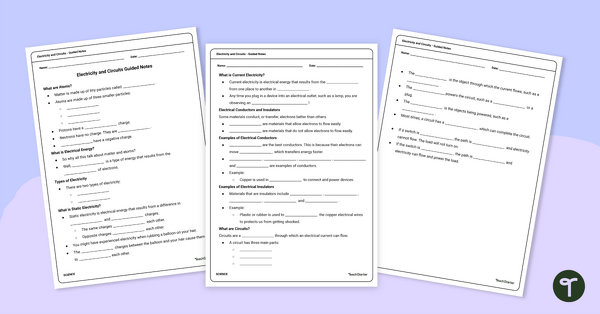
Electricity and Circuits Guided Notes for Year 6
Use this set of guided notes when teaching your students about electricity and circuits.
- Plus Plan
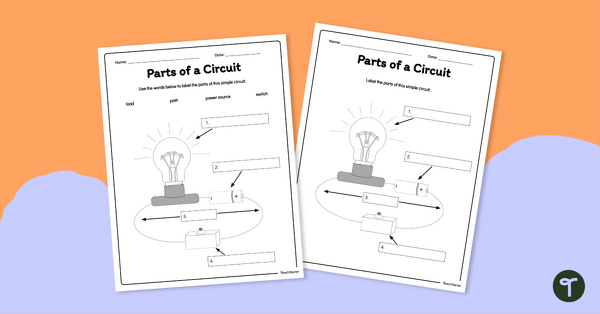
Parts of a Circuit Worksheet
Guide your students to identify and label the 4 parts of a circuit with this electrical circuit worksheet.
- Plus Plan
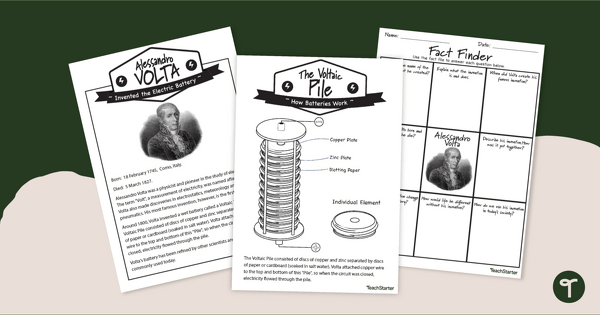
Famous Inventors Fact File — Alessandro Volta Comprehension Worksheet
Print an Alessandro Volta fact file worksheet to introduce students to this famous inventor and expand their understanding of electricity!
- Plus Plan
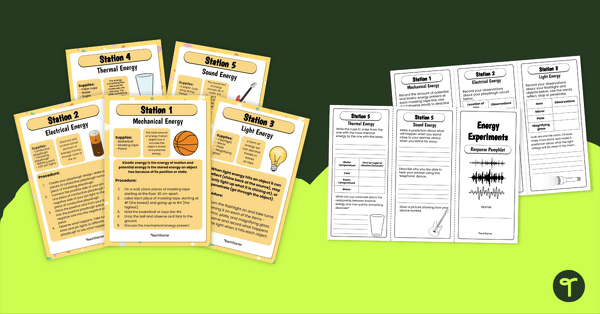
Forms of Energy – Year 4 Science Experiments for Kids
Investigate mechanical, electrical, light, thermal and sound energy with this set of science activities for kids.
- Free Plan
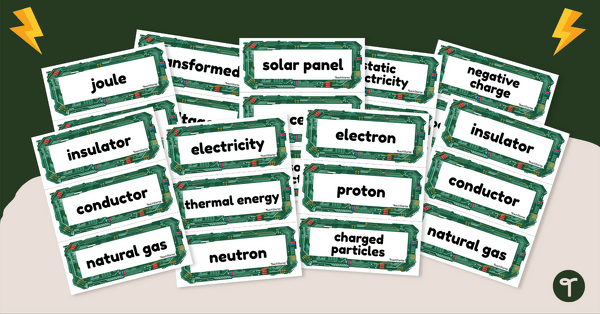
Electricity Word Wall Vocabulary
Use this teacher-created electricity resource to teach electricity-related vocabulary. Build a word wall with your students during your electricity lessons.
- Free Plan
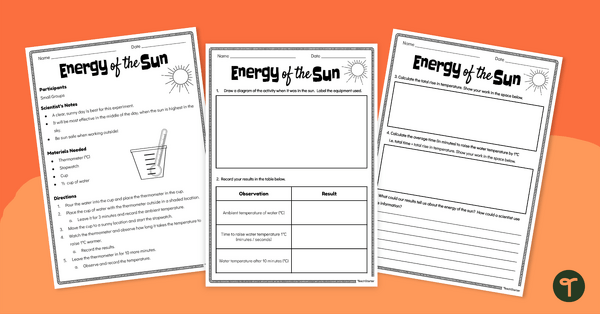
Energy of the Sun Worksheet
Investigate and record the amount of energy from the sun with this science experiment for kids.
- Free Plan
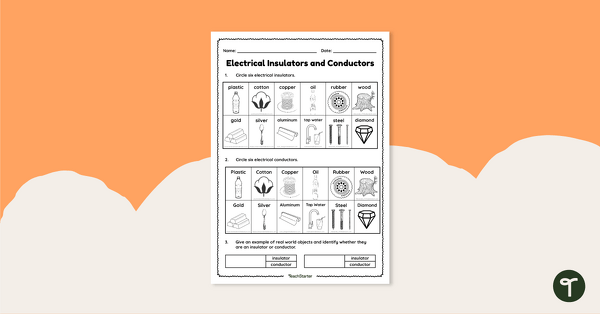
Insulators and Conductors Worksheet
Identify different insulators and conductors of electrical energy with this worksheet.
- Plus Plan
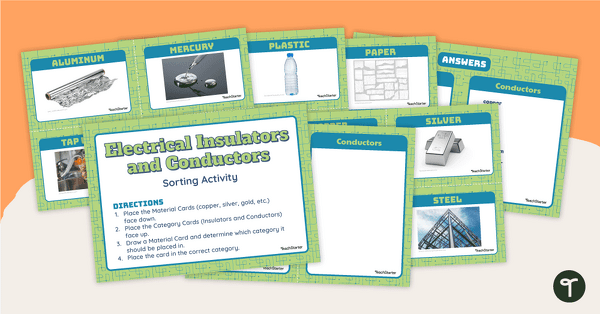
Insulators and Conductors Sorting Activity
Distinguish between electrical insulators and conductors with a picture-based sorting activity.
- Plus Plan

Light Display Banner
A classroom display banner to use on your 'Light' display board.
- Plus Plan

In the Shadows Worksheet
A worksheet that explores the difference between shadows.
- Free Plan
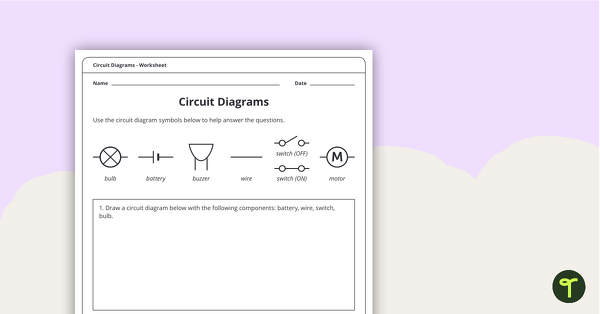
Circuit Diagrams Worksheet
A worksheet that explores how to read and write circuit diagrams.
- Plus Plan
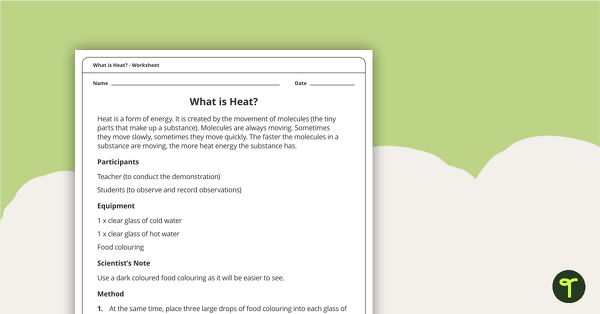
What is Heat? Worksheet
A worksheet to help students understand heat energy.
- Plus Plan
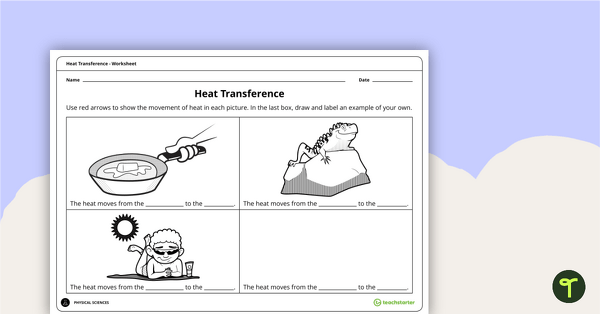
Heat Transference Worksheet
A worksheet to help students identify examples of heat transference.
- Plus Plan
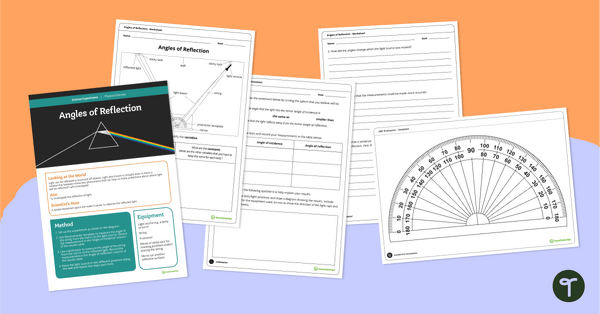
Science Experiment - Angles of Reflection
A science experiment that explores reflected light.